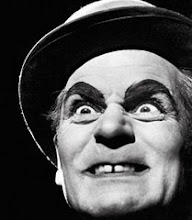
Fig. 1 Wavy Gravy (photo courtesy of Mike M.)
A friend brought over the 40th Anniversary Director's Cut DVD package of 'Woodstock' this past Friday night. Now even though I worked in the music business in the 70s and had crewed-and-cleaned up in many a mini-Woodstock, I hadn't the awareness that this was the anniversary weekend or that anything should be done about it. But with the prospect of any Director's Cut viewing of any picture of consequence coming down the pike (hell, I'd consider a Director's Cut viewing of 'Myra Breckenridge' if I thought it's reveal anything of value... but maybe not...), how could I say No?
You could tell that the folks at Warner Bros. (probably Hollywood's most competent and respectful presenter of past classics on DVD, known and unknown) were, in this case, not of the Woodstock Generation, because of certain kitschy aspects to the packaging. The whole kit is contained in a custom-fitted buckskin-fringed suit, and there is a completely worthless paperweight thing included, with tilt-'n-look pix of the 3 days of peace, love and music.
However, it's the film itself that counts here, and the extras. The offerings are superb: masses of extra footage reveal underknown gold. There's no running commentary through the film as a whole, but at the end of the extras, there's a modest bunch of reminiscences about making the movie from some key players, including director Michael Wadleigh, who's interviewed by Hef (with the legendary Barbie Benton in their presence) on the dangerous-sounding 'Playboy After Dark' in 1970.
Speaking of Wadleigh, he mostly disappeared after Woodstock. In the recent interviews, he seems rather fragile. It could be as a result of any number of things, but no doubt his confidence was shaken, as Woodstock was a pretty tough act to follow. For those of us who like to follow the tech side of filmmaking, Wadleigh's rundown on using the Eclair cameras to film the event was fascinating and enlightening. I had thought they used Arriflexes, and in 35mm too, but the Eclair was the bold alternative back then. I think Kubrick used them for 'A Clockwork Orange'. The blowing up of 16mm clear up to 70 was stunningly successful, a process that was repeated with 'The Concert for Bangladesh'.
Anyway, when it comes to the music, the film is just simple, head-on documentation, but very close-in and so intimate that the epic DeMille-ness of the audience's mass has to be remembered. We are indeed reminded of their presence regularly, but because of the basic setup of the stage, no straight-on master shot of the performers could be attained from out front. So, the camera is either right in there with the music, or is way out in the fringes. It doesn't really matter though, as such conventionality of predictable structure is not to be expected at an event like Woodstock.
The general feeling is that 'Woodstock' was so successful it prevented Warner Bros. from going under. There was gold in them thar hippies, and no doubt conservative/hardass old Jack L. Warner was thanking his lucky stars for the Maharishi, Joe Cocker, and Sly Stone.
Too many memorable moments to list here, but a few: Canned Heat's lead singer's gigantic yellow t-shirt, the stormy skies above the threatened lighting towers, Grace Slick's BLUE eyes and her straight, straight nose, lookin' so neat in that white fringe outfit, Wavy Gravy's Tom Mix hat and toothless grin, the cheerful septic sucking service guy, the gorgeous girl in the water shaving her armpit, Country Joe's Vietnam anthem, Joan Baez' humbleness, the Dead's long, dark middle-of-the-night prowl, and of course, Jimi Hendrix's transcendent, symphonic genius in closing down the show.
The coverage of the weekend's 'racier' side - you know, the nudity and the free love - is unavoidably voyeuristic but never prurient. After all, this was an event where people were electively choosing to reveal behavior that is, well, attention-getting. There's no evidence that anybody with a camera was threatened to get his head busted for aiming it at them (something that would most likely happen today... meth does terrible things...), and this is remarkable because there was bad acid circulating around. The reportage of interviews, casual encounters, and comments from all types, is random and a very mixed grille. It is also familiar to me personally as well, and in almost a generic sense. At most any rock festival one can encounter similar exchanges, even unto this day. The Woodstock Effect lives!
The film holds up well. It is not belabored or pretentious. There are a few period quaintnesses - how could there not be, what with John Sebastian's far-out-correct speech, The Who's off-color performance, and so many performers wearing fringe outfits (Grace Slick can wear all the fringe she wants - all the time!), but there's virtually nothing for later, superior-minded viewers to mock or deride.
'Woodstock' is a document of social and historical value, but it is also, first and foremost, a helluva concert film.


No comments:
Post a Comment